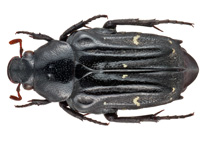Abstract
The genus Eutichurus was created by Simon (1897) on the basis of three species from Brazil and Ecuador originally placed in the family Clubionidae. Lehtinen (1967) transferred the genus to Miturgidae and created the subfamily Eutichurinae, although the limitation of this taxon was not clear. Bonaldo (1994) defined this subfamily based on the Neotropical genera Eutichurus, Radulphius Keyserling, 1891 and Ericaella Bonaldo, 1994. Ramírez (2014), based on an extensive phylogenetic analysis, elevated the rank of Eutichurinae to family, including 12 genera in the group. Ramírez (2014) indicated that the monophyly of Eutichuridae is considerably well supported, but the higher-level relationships are not totally clear and are still under discussion. The genus Eutichurus includes medium sized entelegynae ecribellate spiders distributed mostly in the Neotropics and comprising 26 valid species, from which only ten have both sexes described (World Spider Catalog 2015). One of those species is Eutichurus ibiuna Bonaldo, 1994 that was described based only on the male holotype. Recently, we examined specimens collected in Northeastern Uruguay and we found 2 females, one of which was collected with the egg sac. Some eggs were bred under laboratory conditions and we obtained six males and six females. We confirmed that the males belong to this species based on the description provided by Bonaldo (1994), and we described the female for the first time. The specimens represent the first records of the species for Uruguay, and a significant expansion of its known distribution. The new locations are situated approximately at 1200 kilometers south from the type locality.

